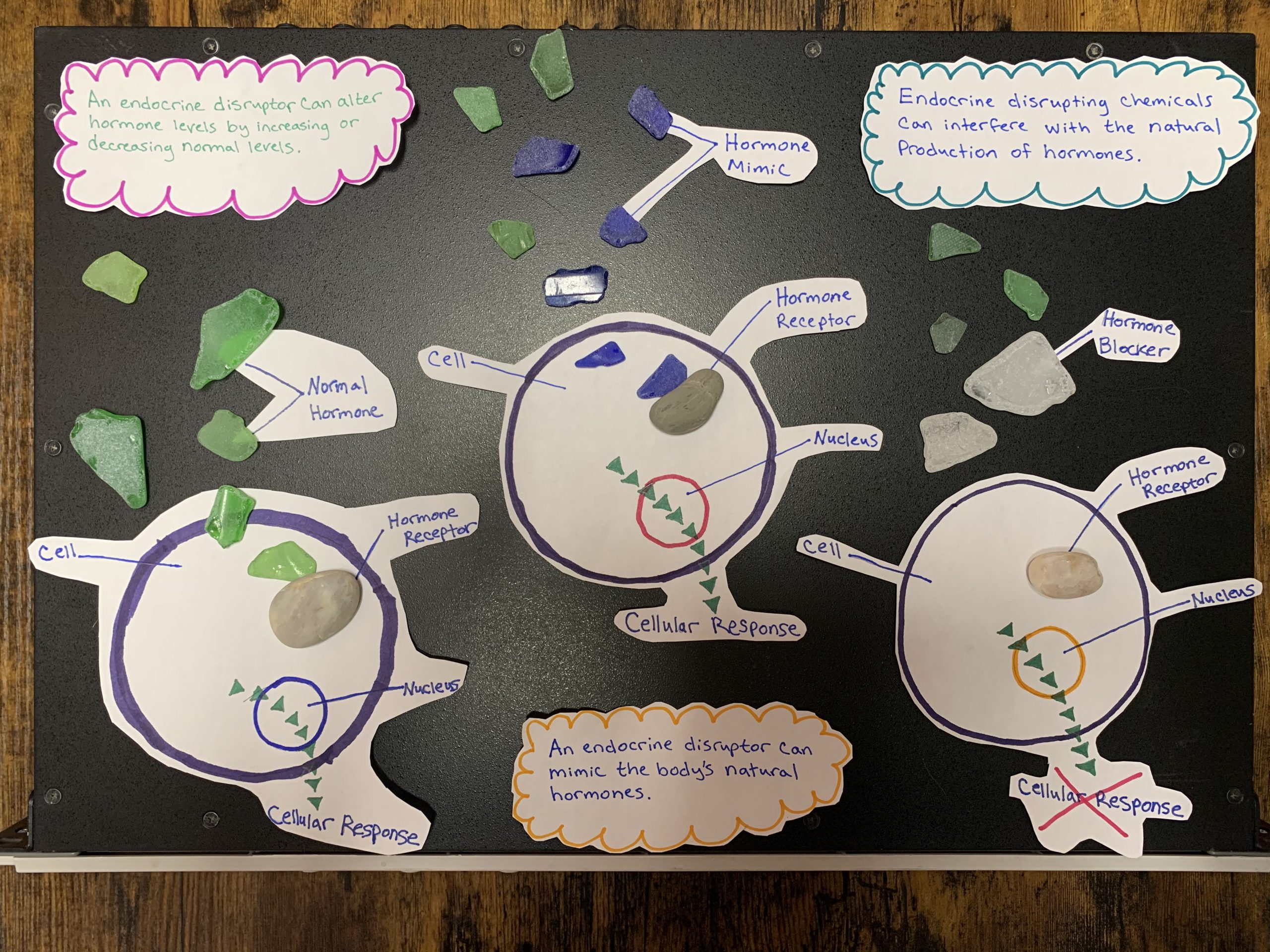For my STEAM project I used sea glass, rocks, and markers to explain how chemicals can mimic or interfere with our body’s natural hormones. These chemicals are known as endocrine disrupting chemicals. They can be natural or man-made. We can be exposed to them through the food we eat, beverages we drink, air we breathe, and things our skin comes into contact with. Endocrine disruptors have been linked to reproductive problems, thyroid issues, developmental abnormalities, cognitive issues, and more. 

Molly’s STEAM project is about Endocrine Disrupting Chemicals (EDCs). EDCs are natural or man-made chemicals that interact with the endocrine system. We can be exposed to EDCs through a variety of things in our environment. EDCs can cause serious health problems including but not limited to reproductive problems, thyroid issues, developmental abnormalities, and cognitive issues. These chemicals can interfere in 2 ways. Either by mimicking the body’s natural hormones or interfering with the endocrine system’s ability to function normally. EDCs interfering with the endocrine system is problematic because the endocrine system regulates physiological functions. Endocrine disruptors can also cause abnormal hormone levels, by increasing or decreasing the hormone levels.
Using drawings, sea glass, and rocks, Molly visually shows how EDCs can interact with hormones and hormone receptors. One demonstrates a normal hormone binding to a hormone receptor. The next one demonstrates how in the presence of a hormone mimic, the mimic binds to the hormone receptor instead of the real hormone. The last one demonstrates how a hormone blocker prevents the hormone from binding with the hormone receptor, therefore causing no cellular response. This visual really helped me understand how the hormones in the endocrine system work, as well as how the EDCs change this process.
Great job, Molly! I really enjoyed learning about EDCs through your project.